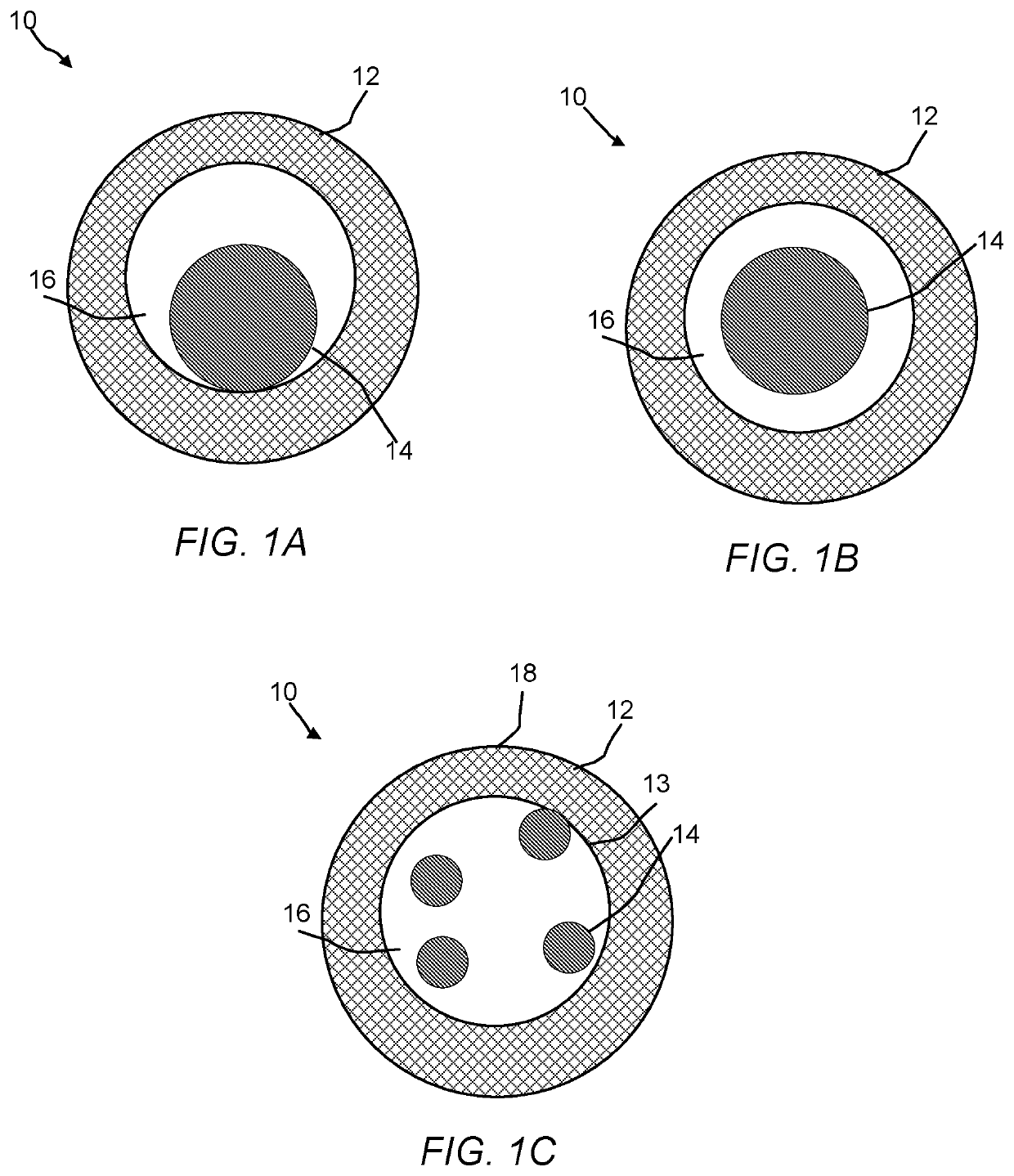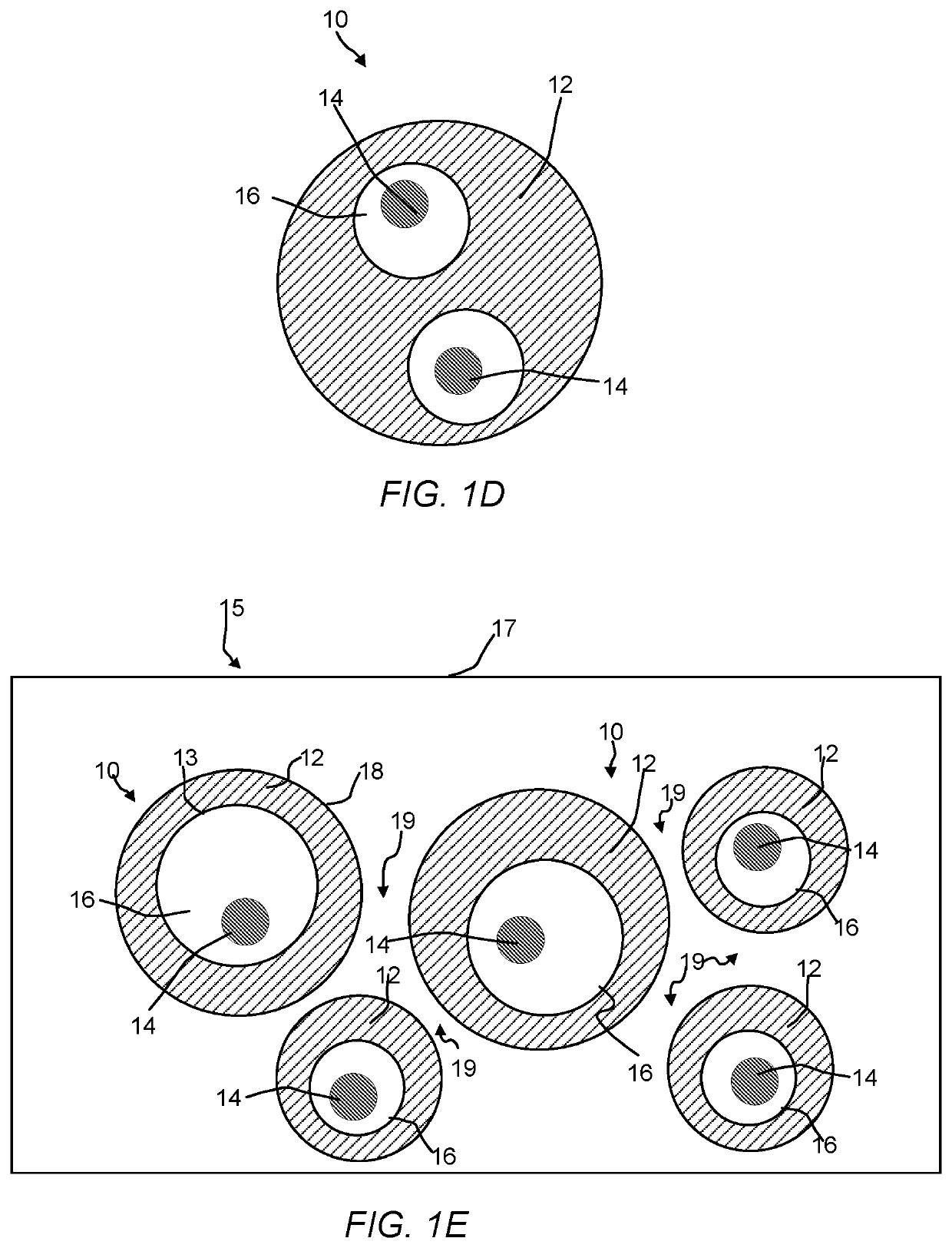Hollow zeolites catalysts for the production of alkl aromatic compounds from aromatic hydocarbons and olefins
a technology of hollow zeolites and catalysts, which is applied in the direction of inorganic chemistry, pentasil aluminosilicate zeolite, molecular sieve catalysts, etc., can solve the problems of poor dispersion of catalytic material on the surface of zeolite, deactivation, stability, and leaching of catalysts, and achieves the effect of increasing catalytic stability and efficiency
- Summary
- Abstract
- Description
- Claims
- Application Information
AI Technical Summary
Benefits of technology
Problems solved by technology
Method used
Image
Examples
example 1
Synthesis of Fe(III)2O3 / Hollow-Silicalite-1 Catalyst Material
[0053]Silicalite-1 is obtained by mixing tetraethylorthosilicate (TEOS, 98% purity, Sigma-Aldrich®, USA) and tetrapropylammonium hydroxide (TPA(OH), 1.0 M, in H2O, Sigma-Aldrich®, USA) with water. The gel composition is SiO2: 0.4 TPA(OH): 35 H2O. Then, the mixture is transferred into a Teflon-lined autoclave and heated at 170° C. under static condition for 3 days. The solid was recovery by centrifugation and washed with water, which was repeated 3 times. The resulting solid was dried overnight at 110° C. and then calcined at 525° C. in air for 12 h. Subsequently, the zeolite was treated under vacuum (0.1 to 1 mbar) at 300° C. for 10 hours. Then, dry impregnation of iron nitrate on the zeolite surface was carried out (3 wt. % of Fe, CFe(NO3)3 solution=0.5 mol. L−1) in water. After impregnation, the impregnated zeolite was dried and then calcined (2 h under air, 400° C., 1° C. / min) in order to obtain a metal oxide which was ...
example 2
Characterization of Fe2O3 in Hollow Silicalite-1
[0054]Transmission Electron Microscopy (TEM) analysis was performed on the inventive sample from Example 1 using a Titan G2 80-300 kV transmission electron microscope operating at 300 kV (FEI™, USA) equipped with a 4 k×4 k CCD camera, a GIF Tridiem filter (Gatan, Inc., USA), and an Energy dispersive X-ray (EDAX) detector. FIGS. 4A and 4B are TEM images of the catalyst of Example 1 at a scale of 200 nm and 20 nm. From the TEM, it was determined that regular hexagonal shaped nanoparticles of hollow zeolite with an average dimension of 50 to 60 nm were formed. The wall thickness of the hollow silicalite-1 zeolite was about 15 nm whereas the cavity was about 30 nm. Nanoparticles of iron were not observable within the microscope resolution, but were detected by EDAX (See, FIG. 5). It was determined that by using this process of making the metal nanostructure / hollow zeolite, a high homogeneity of hollow zeolite was obtained in terms of size ...
example 3
Production of Ethylbenzene from Ethylene and Benzene
[0055]The catalyst (300 g) from Example 1 or a comparative catalyst (H-ZSM-5, Si / Al=30) and benzene (10 mL) were introduced into a 100 mL PARR autoclave reactor. Then, the pressure was increased to 10 bar with pure ethylene. The reactor was stirred and the temperature was increased to 250° C. After 24 h, the reaction was cooled and the liquid phase was analyzed by using an Agilent Technologies (USA) GC-MS (Agilent 7890b with a FID detector and HP 5MS UI columns, 0.25 micrometer and a Agilent 5977A Mass spectrometer). The benzene conversion for the comparative catalyst 15% and the conversion for the Fe-silicate-1 catalyst of the present invention was 9%. FIG. 6 shows a high selectivity in ethylbenzene (SelecEB) of 90% for the Fe-Silicalite-1 catalyst. In FIG. 6, the peak at 2.2 min. was benzene and the peak at 4.3 min. was ethylbenzene. FIG. 7 shows the comparative catalyst with the formation with ethylbenzene and the by-product met...
PUM
| Property | Measurement | Unit |
|---|---|---|
| Temperature | aaaaa | aaaaa |
| Temperature | aaaaa | aaaaa |
| Temperature | aaaaa | aaaaa |
Abstract
Description
Claims
Application Information
 Login to View More
Login to View More - R&D
- Intellectual Property
- Life Sciences
- Materials
- Tech Scout
- Unparalleled Data Quality
- Higher Quality Content
- 60% Fewer Hallucinations
Browse by: Latest US Patents, China's latest patents, Technical Efficacy Thesaurus, Application Domain, Technology Topic, Popular Technical Reports.
© 2025 PatSnap. All rights reserved.Legal|Privacy policy|Modern Slavery Act Transparency Statement|Sitemap|About US| Contact US: help@patsnap.com



